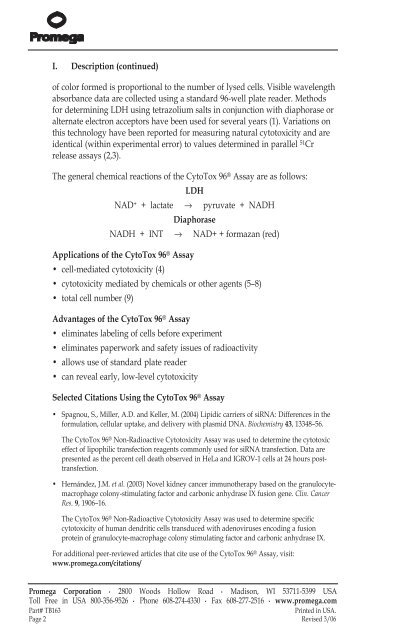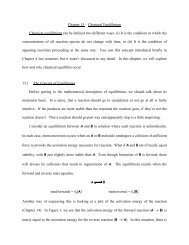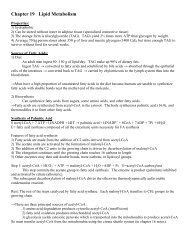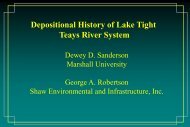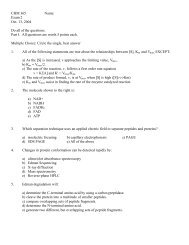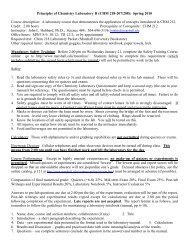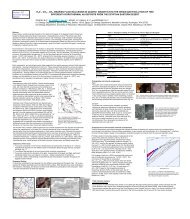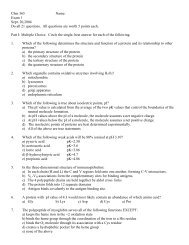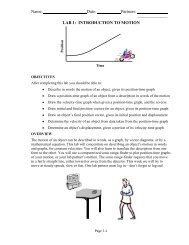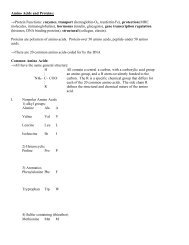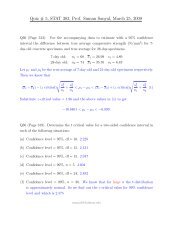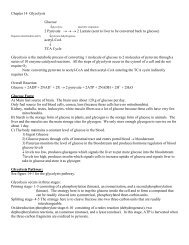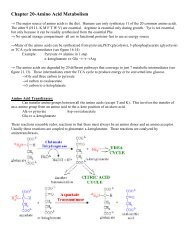CytoTox 96(R) Non-Radioactive Cytotoxicity Assay Technical ...
CytoTox 96(R) Non-Radioactive Cytotoxicity Assay Technical ...
CytoTox 96(R) Non-Radioactive Cytotoxicity Assay Technical ...
Create successful ePaper yourself
Turn your PDF publications into a flip-book with our unique Google optimized e-Paper software.
I. Description (continued)<br />
of color formed is proportional to the number of lysed cells. Visible wavelength<br />
absorbance data are collected using a standard <strong>96</strong>-well plate reader. Methods<br />
for determining LDH using tetrazolium salts in conjunction with diaphorase or<br />
alternate electron acceptors have been used for several years (1). Variations on<br />
this technology have been reported for measuring natural cytotoxicity and are<br />
identical (within experimental error) to values determined in parallel 51 Cr<br />
release assays (2,3).<br />
The general chemical reactions of the <strong>CytoTox</strong> <strong>96</strong> ® <strong>Assay</strong> are as follows:<br />
LDH<br />
NAD + + lactate → pyruvate + NADH<br />
Diaphorase<br />
NADH + INT → NAD+ + formazan (red)<br />
Applications of the <strong>CytoTox</strong> <strong>96</strong> ® <strong>Assay</strong><br />
• cell-mediated cytotoxicity (4)<br />
• cytotoxicity mediated by chemicals or other agents (5–8)<br />
• total cell number (9)<br />
Advantages of the <strong>CytoTox</strong> <strong>96</strong> ® <strong>Assay</strong><br />
• eliminates labeling of cells before experiment<br />
• eliminates paperwork and safety issues of radioactivity<br />
• allows use of standard plate reader<br />
• can reveal early, low-level cytotoxicity<br />
Selected Citations Using the <strong>CytoTox</strong> <strong>96</strong> ® <strong>Assay</strong><br />
• Spagnou, S., Miller, A.D. and Keller, M. (2004) Lipidic carriers of siRNA: Differences in the<br />
formulation, cellular uptake, and delivery with plasmid DNA. Biochemistry 43, 13348–56.<br />
The <strong>CytoTox</strong> <strong>96</strong> ® <strong>Non</strong>-<strong>Radioactive</strong> <strong>Cytotoxicity</strong> <strong>Assay</strong> was used to determine the cytotoxic<br />
effect of lipophilic transfection reagents commonly used for siRNA transfection. Data are<br />
presented as the percent cell death observed in HeLa and IGROV-1 cells at 24 hours posttransfection.<br />
• Hernández, J.M. et al. (2003) Novel kidney cancer immunotherapy based on the granulocytemacrophage<br />
colony-stimulating factor and carbonic anhydrase IX fusion gene. Clin. Cancer<br />
Res. 9, 1906–16.<br />
The <strong>CytoTox</strong> <strong>96</strong> ® <strong>Non</strong>-<strong>Radioactive</strong> <strong>Cytotoxicity</strong> <strong>Assay</strong> was used to determine specific<br />
cytotoxicity of human dendritic cells transduced with adenoviruses encoding a fusion<br />
protein of granulocyte-macrophage colony stimulating factor and carbonic anhydrase IX.<br />
For additional peer-reviewed articles that cite use of the <strong>CytoTox</strong> <strong>96</strong> ® <strong>Assay</strong>, visit:<br />
www.promega.com/citations/<br />
Promega Corporation · 2800 Woods Hollow Road · Madison, WI 53711-5399 USA<br />
Toll Free in USA 800-356-9526 · Phone 608-274-4330 · Fax 608-277-2516 · www.promega.com<br />
Part# TB163<br />
Printed in USA.<br />
Page 2 Revised 3/06


